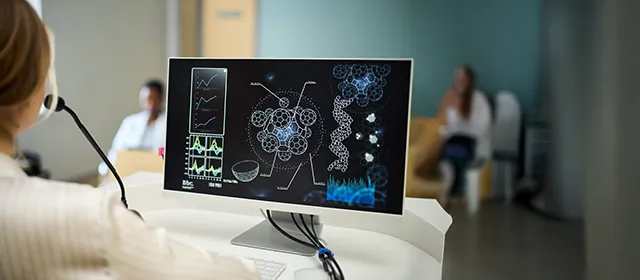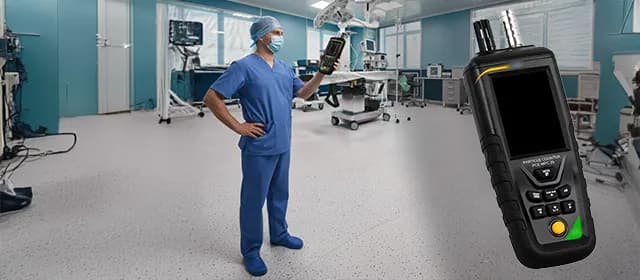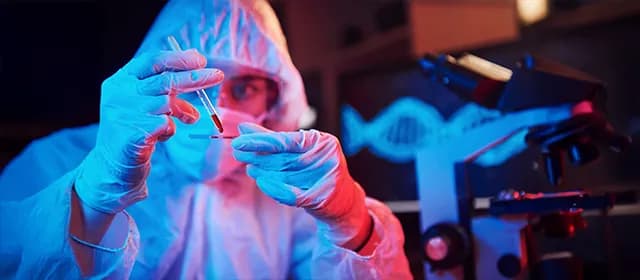Cancer remains one of the leading causes of morbidity and mortality globally. A total of 19.98 million (about 20 million) cases of cancer were diagnosed in 2022, 10.31 million among men and 9.66 million among women (Source: https://www.wcrf.org/). The rising global burden of cancer has pressed healthcare systems to improve early detection and diagnostic accuracy.
Artificial intelligence (AI) has emerged as a powerful tool in this domain. For example, a systematic review and meta-analysis of AI applied to oral cancer histopathological images reported sensitivities ranging from 97.76% to 99.26% and specificities between 92% and 99.42%. Similarly, AI in cervical cytology screening showed a pooled diagnostic accuracy of about 90%, with a sensitivity of 97% and a specificity of 94% (Source: https://pubmed.ncbi.nlm.nih.gov/).
These performance levels not only highlight AI’s potential in improving diagnostic outcomes but also provide healthcare leaders with a signal that AI is moving beyond research and into real-world clinical workflows.
What Is AI in Cancer Diagnostics and How Does It Work?
Artificial Intelligence (AI) in cancer diagnostics refers to the application of machine learning (ML) and deep learning (DL) algorithms to analyze medical data—such as imaging, histopathology slides, and genomic sequences—to detect, classify, and predict cancerous changes. These AI models are trained on large datasets annotated by medical experts, enabling them to recognize patterns and anomalies that may be indicative of cancer.
A systematic review and meta-analysis assessing AI's performance in diagnosing skin cancer found that AI algorithms achieved a pooled sensitivity of 87.0% and specificity of 77.1%, outperforming general clinicians who had a sensitivity of 79.78% and specificity of 73.6%. Notably, AI demonstrated comparable performance to expert dermatologists, with a sensitivity of 92.5% and specificity of 66.5%. These findings underscore AI's potential to enhance diagnostic accuracy, especially in settings with limited access to specialists.
In cervical cancer diagnostics, AI-assisted screening methods have shown promising results. AI can significantly aid in the early detection and diagnosis of cervical cancer, potentially reducing the burden on healthcare systems.
The underlying mechanism of AI in cancer diagnostics involves training algorithms on extensive datasets to identify patterns associated with cancerous changes. For instance, convolutional neural networks (CNNs), a class of deep learning models, have been employed to analyze medical images and histopathology slides. These models can learn hierarchical features from raw data, enabling them to detect subtle differences between malignant and benign tissues.
How Is AI Being Applied Across Cancer Types and Diagnostic Modalities?
Kings Research estimates that the global AI in cancer diagnostics market is estimated to generate a revenue of USD 6,487.9 million by 2031. AI's versatility allows its application across various cancer types and diagnostic modalities, enhancing early detection and treatment planning. In breast cancer, AI algorithms have been developed to analyze mammograms and identify potential malignancies. These systems can highlight areas of concern, allowing radiologists to focus their attention on regions that may require further examination or biopsy.
In lung cancer diagnostics, AI has been utilized to analyze CT scans for early detection of nodules. Studies have shown that AI can detect lung cancer at earlier stages, potentially leading to better patient outcomes. For instance, a study published in the journal Nature demonstrated that AI algorithms could identify lung cancer nodules with high accuracy, outperforming traditional methods.
AI applications extend to gastrointestinal cancers as well. In colorectal cancer, AI models have been trained to analyze colonoscopy images, assisting in the identification of polyps and lesions that may be indicative of cancer. These AI systems can aid gastroenterologists in detecting abnormalities that might be missed during routine examinations.
Furthermore, AI is being employed in the analysis of pathology slides for various cancers. By examining tissue samples, AI algorithms can assist pathologists in identifying cancerous cells and determining the extent of the disease. This application is particularly valuable in cases where manual analysis may be time-consuming or prone to human error.
The integration of AI into these diagnostic processes offers several benefits. It can increase the accuracy of early cancer detection, reduce the workload of healthcare professionals, and potentially lead to better patient outcomes. However, the successful implementation of AI in these areas requires rigorous validation and continuous monitoring to ensure its effectiveness and safety.
Why Should Healthcare Institutions Invest in AI-Based Diagnostic Tools?
Investing in AI diagnostic tools gives hospitals many benefits to improve patient care and operational efficiency. One of the biggest is better diagnostic accuracy. AI can analyse complex medical data like imaging and pathology slides to identify patterns that may indicate cancer. This helps clinicians make more accurate diagnoses and timely interventions.
Also, AI can reduce diagnostic errors. Human error is a risk in medical diagnostics, but AI systems can provide consistent and objective analysis of medical data. By being a supplementary tool for clinicians, AI can reduce the impact of errors and ensure patients get the right diagnosis and treatment.
Another benefit is cost savings. The initial investment in AI technology is big, but the long-term savings are huge. AI can streamline diagnostic processes, reduce unnecessary tests, and improve patient outcomes, all of which can lead to lower healthcare costs over time.
Moreover, AI can enhance the efficiency of healthcare operations. By automating certain aspects of the diagnostic process, AI can free up healthcare professionals to focus on other critical tasks. This increased efficiency can lead to shorter wait times for patients, improved workflow within healthcare facilities, and better utilization of resources.
Furthermore, the use of AI in diagnostics can improve patient outcomes. Early and accurate detection of cancer is crucial for successful treatment. AI can assist in identifying cancers at earlier stages, when they are more treatable, thereby increasing the likelihood of positive patient outcomes.
Risks, Limitations, and Regulatory Hurdles
While AI has the potential to transform cancer diagnostics, there are risks, limitations, and regulatory hurdles to be addressed to make it safe and effective.
- Data Quality and Bias: AI algorithms are trained on large datasets, and the quality of those datasets determines the performance of the AI. If the data used to train AI models is biased or not representative of the diverse patient population, the AI will produce inaccurate or unfair results. For example, an AI model trained on data from one demographic group will not work well for patients from other groups.
- Interpretability and Trust: Many AI models, especially deep learning models, are “black boxes,” meaning their decision-making is not understandable by humans. Lack of transparency can prevent clinicians from trusting AI recommendations and may limit the adoption of AI in clinical practice. Making sure AI systems are interpretable and their decision-making is explainable is key to acceptance and integration into healthcare.
- Regulatory Approval: Deploying AI in clinical diagnostics requires regulatory approval to ensure safety and efficacy. Regulatory bodies like the US FDA and EMA have guidelines for AI-based medical devices. But the rapidly evolving nature of AI makes it challenging to keep regulatory standards up to date. Collaboration between AI developers, healthcare providers, and regulatory agencies is necessary to establish and maintain regulatory guidelines.
- Integration into Clinical Workflows: Integrating AI into existing clinical workflows can be tough. Healthcare professionals may need training to use AI systems, and the integration process must be seamless to not disrupt patient care. AI systems must also be compatible with existing EHR systems and other healthcare technologies.
How Can Healthcare Providers Strategically Adopt AI Diagnostics?
Healthcare providers can strategically adopt AI diagnostics by taking a phased and collaborative approach that aligns with their organizational goals and patient care objectives.
- Assess Organizational Readiness: Before implementing AI diagnostics, healthcare institutions should evaluate their readiness in terms of infrastructure, data quality, and staff expertise. This assessment will help identify areas that require investment and development to support AI integration.
- Pilot AI Tools in Specific Areas: Starting with pilot projects allows healthcare providers to test AI tools in specific departments or for particular cancer types. This approach enables the organization to assess the effectiveness of the AI system, identify potential challenges, and make necessary adjustments before broader implementation.
- Collaborate with AI Developers and Researchers: Partnering with AI developers and academic researchers can facilitate the customization of AI tools to meet the specific needs of the healthcare institution. Collaborative efforts can also contribute to the development of AI models that are tailored to the institution's patient population and clinical workflows.
- Provide Staff Training and Change Management: Successful adoption of AI requires that clinicians, technicians, and administrative staff are trained to use AI tools effectively. Change management initiatives, including workshops, training sessions, and pilot program feedback loops, can enhance adoption rates. A study published in the Journal of Medical Internet Research in 2021 found that 73% of respondents cited adequate staff training and expertise as success factors for AI implementation in clinical practice (Source: https://pmc.ncbi.nlm.nih.gov/).
Future of AI in Cancer Diagnostics
The future of AI in cancer diagnostics is poised to bring transformative changes, offering new opportunities for precision medicine, earlier detection, and personalized care pathways. AI systems are expected to evolve beyond mere diagnostic tools into intelligent decision-support systems capable of integrating multi-modal patient data. including genomics, imaging, pathology, and electronic health records, to deliver holistic insights.
One promising area is predictive analytics. AI algorithms may predict a patient’s risk for developing cancer years before onset, enabling preventative measures and early interventions. According to the National Cancer Institute (NCI), predictive analytics could reduce cancer incidence and improve survival rates by identifying high-risk patients for targeted screening.
Integration with liquid biopsies is another exciting frontier. AI can analyze complex molecular data from blood samples to detect early cancer signals that might otherwise be missed. A relevant study published in Nature Communications in 2024 developed a 4-miRNA diagnostic model that achieved at least 90% sensitivity for detecting multiple cancer types, including biliary tract, bladder, colorectal, esophageal, gastric, glioma, pancreatic, and prostate cancers.
AI-powered real-time diagnostics could soon become part of routine cancer care. Imaging modalities like MRI, CT scans, and digital pathology could incorporate AI algorithms to instantly flag suspicious areas, enabling clinicians to make faster and more informed decisions. For instance, researchers developed an AI system for breast cancer screening that reduced false positives by 5.7% and false negatives by 9.4% (Source: https://pubmed.ncbi.nlm.nih.gov/).
Final Thoughts
AI in cancer diagnostics is no longer a futuristic concept; it is a rapidly advancing reality that holds immense promise for healthcare providers, patients, and the broader medical ecosystem. From improving diagnostic accuracy to enabling early detection and personalizing treatment, AI is poised to transform cancer care.
Ultimately, AI’s role in cancer diagnostics represents a profound shift toward precision medicine, a future where cancer is detected earlier, diagnosed more accurately, and treated more effectively. For healthcare providers, embracing this change is not just about adopting new technology; it is about leading the way toward a smarter, more responsive, and patient-centric healthcare system.




